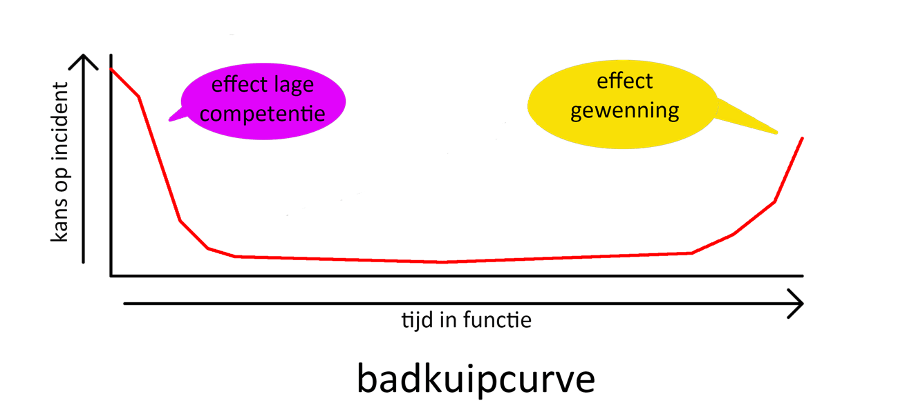Risk sensitivity
This message forms the second part of a triptych about the way in which people perceive and handle risks. Risk sensitivity is a product of the emotional brain, also called the mammalian brain. This area controls how we relate to objects or people in our immediate environment. Part of this area, the almond core or amygdala, ensures that we learn to know dangers and leads us away from it. As such, it plays an important role in our personal safety management.
Innate
Our distant ancestors have lived for thousands of years in a world where the most important dangers were stable. Recognizing and anticipating these dangers is recorded in the human DNA during that period. As a result, the almond core is susceptible to hazards such as altitude, fire, extreme weather conditions, snakes and insects in almost all people around the world. Together these fears contribute to survival as a human species.
Learned
This innate system would have been sufficient if the world had not undergone major changes since then. The industrial revolution has dramatically changed our society and created many new dangers. Moreover, these dangers are also much more powerful than before. Our innate hazard system is not geared to that. Fortunately, it is able to get to know new hazards and to store them in a “hazard archive”. Promoting safe behavior therefore begins with filling this archive with the new dangers that are associated with working in a certain environment or performing a certain task.
Object – fear – location
The hazard archive always stores three types of data together. The storage is provided by the hippocampus. This area also keeps track of where a hazard is. The object is linked to a fear (the internal alarm bell) and to a location. Both programming and later activating the alarm bell are easier if you store the dangers while being at the location itself. This is the most important reason why a Last Minute Risk Assessment (LMRA) is best done at the place where the work is being carried out and not, for example, in a building site. The impact of the LMRA on the brain is then greatest.
Risk education
Since risk sensitivity is an activity of the emotional brain, the learning processes associated with it also take place via the emotional channel. Feeling is more important here than understanding. One can therefore best be trained by someone who is already sensitive to a certain risk. The fear for a specific stimulus jumps over from the instructor to the instructed person. This learning can be seen as a form of emotional contamination.
Habituation
The main enemy of established risk sensitivity is habituation. This occurs when we often perceive the same hazard. Although the alarm bell is activated, another part of the brain reduces the strength of the alarm. This part has remembrance that previous confrontation with the danger ended well. The greater the number of positive memories, the less powerful the alarm bell becomes. As a result, a well-trained employee can, after a while, respond less alert to the perception of a hazard.
Bathtub curve
This creates the so-called bathtub curve. The risk of an incident is greatest at the start of work due to a lack of risk sensitivity and a lack of skills to deal with those risks. A relatively safe period is then entered. Over time, this safe period is disrupted again by excessive habituation to the risks associated with implementation.
The best remedy for the bathtub curve is to do another job or do the same job in a different environment. Job rotation contributes to the “resetting” of danger sensitivity and thus to safer working.
Risk understanding
The following message is about the third way in which we learn to deal with risks. Risk understanding is a product of the modern brain that helps us to detect risks in our environment through language and cognition.
June Daalmans
January 2020
P.S. The recently published book “The first line manager and safe working behavior” describes how a manager can use risk sensitivity to work more safely.



